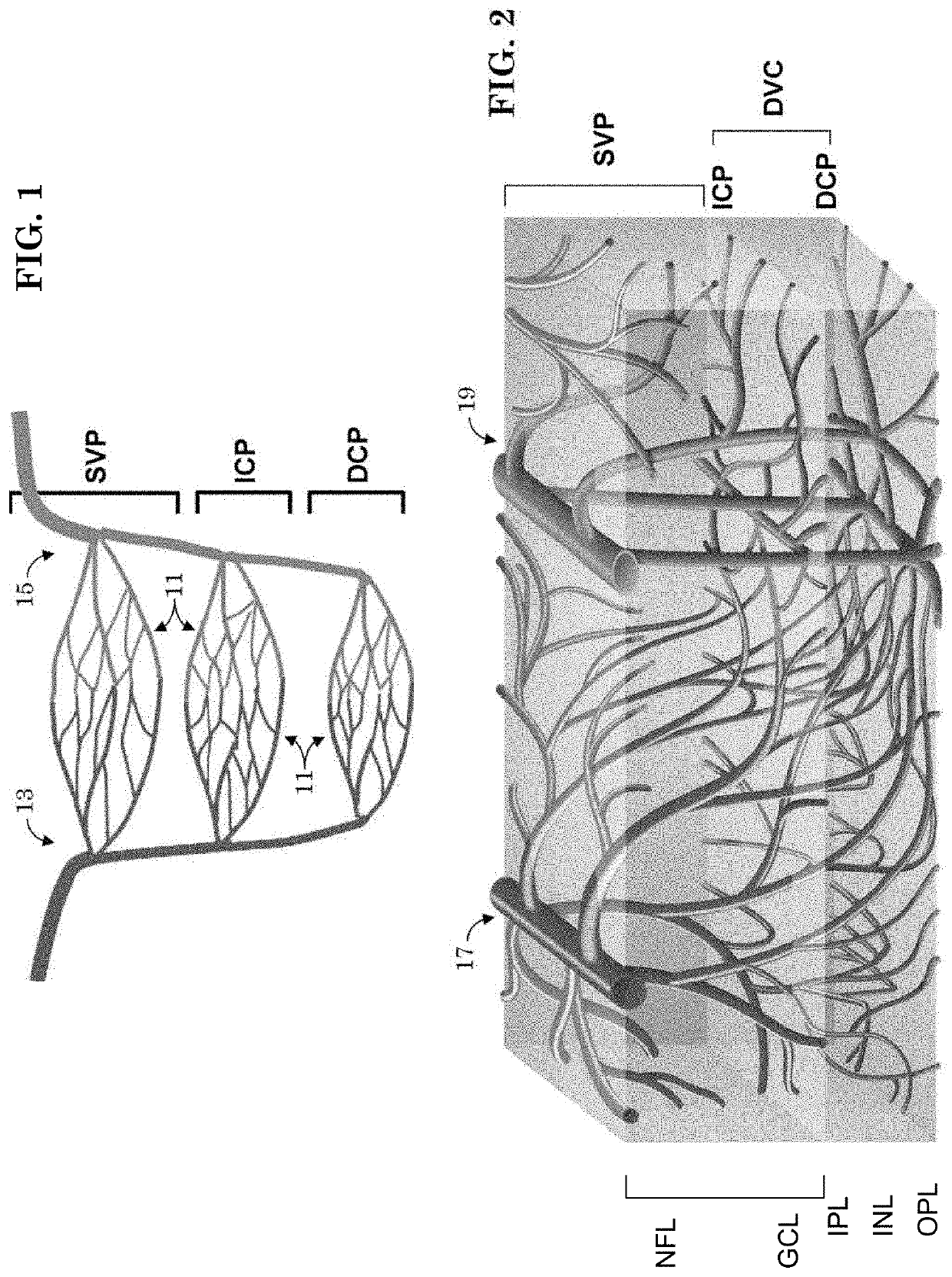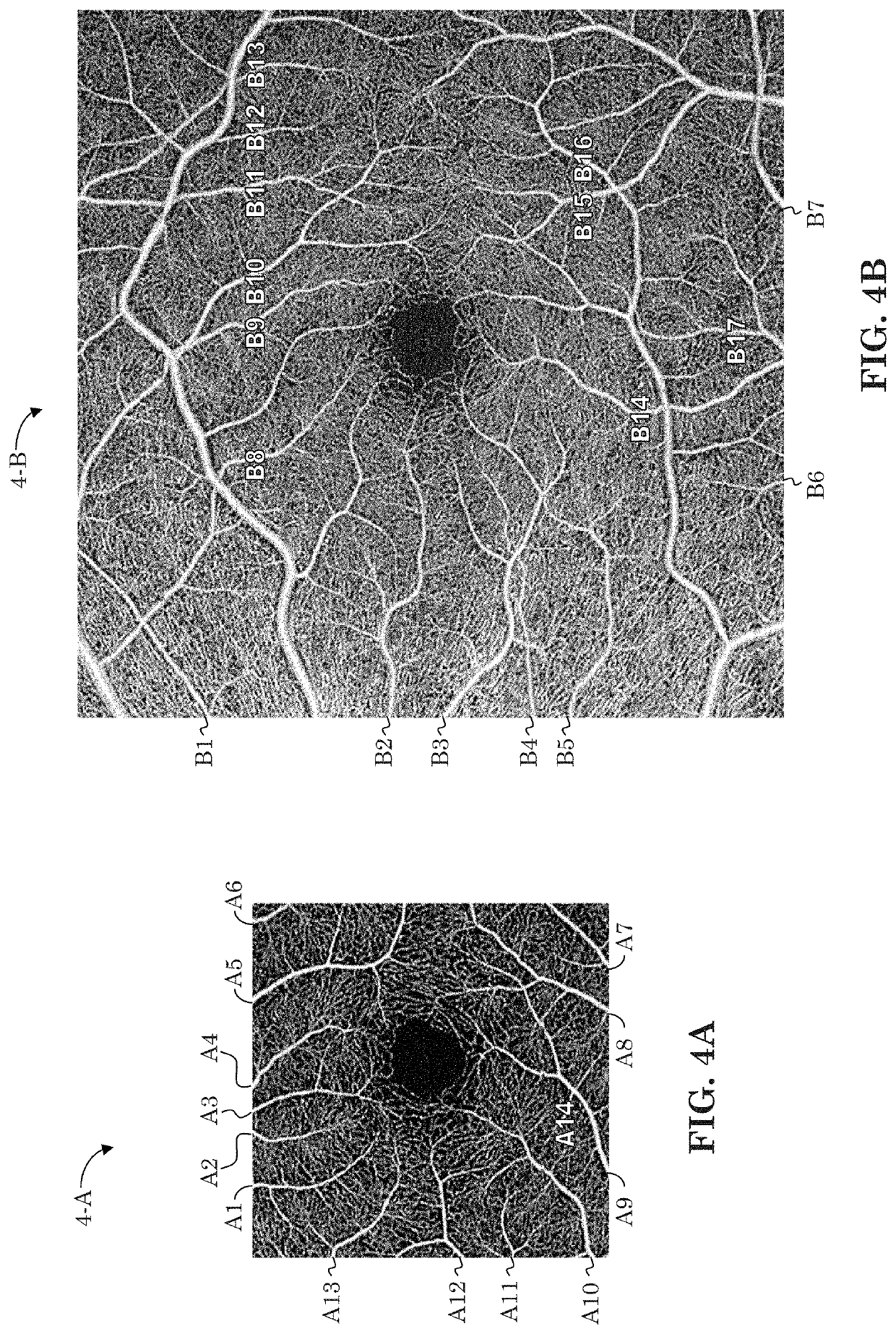Oct-based retinal artery/vein classification
a retinal artery and classification technology, applied in image analysis, medical science, diagnostics, etc., can solve the problems of inability to classify the smaller caliber vessels in the fundus photograph, inability to take care, and inability to solve many real-world situations. , to achieve the effect of improving the segmentation of the retinal layer, fast scanning speed, and enhancing the resolution of current oct devices
- Summary
- Abstract
- Description
- Claims
- Application Information
AI Technical Summary
Benefits of technology
Problems solved by technology
Method used
Image
Examples
Embodiment Construction
[0055]As is discussed more fully below, optical coherence tomography (OCT) and optical coherence tomography angiography (OCTA) enable noninvasive, depth-resolved (e.g., A-scan), volumetric (e.g., C-scan) and two-dimensional (e.g., en face or cross-sectional / B-scan) visualization of retinal vasculature. OCT provides structural images of vasculature whereas OCTA provides functional images of vasculature. For example, OCTA may image vascular flow by using the motion of flowing blood as an intrinsic contrast. However, there are various types of ophthalmic imaging systems, such as discussed below in section “Fundus Imaging System” and in section “Optical Coherence Tomography (OCT) Imaging System.” Unless otherwise stated, aspects of the present invention(s) may apply to any, or all, such ophthalmic imaging systems. For example, the methods / systems presented herein for differentiating arteries and veins in vasculature images may be applied to OCT structural images and / or OCTA functional i...
PUM
 Login to View More
Login to View More Abstract
Description
Claims
Application Information
 Login to View More
Login to View More - R&D
- Intellectual Property
- Life Sciences
- Materials
- Tech Scout
- Unparalleled Data Quality
- Higher Quality Content
- 60% Fewer Hallucinations
Browse by: Latest US Patents, China's latest patents, Technical Efficacy Thesaurus, Application Domain, Technology Topic, Popular Technical Reports.
© 2025 PatSnap. All rights reserved.Legal|Privacy policy|Modern Slavery Act Transparency Statement|Sitemap|About US| Contact US: help@patsnap.com



